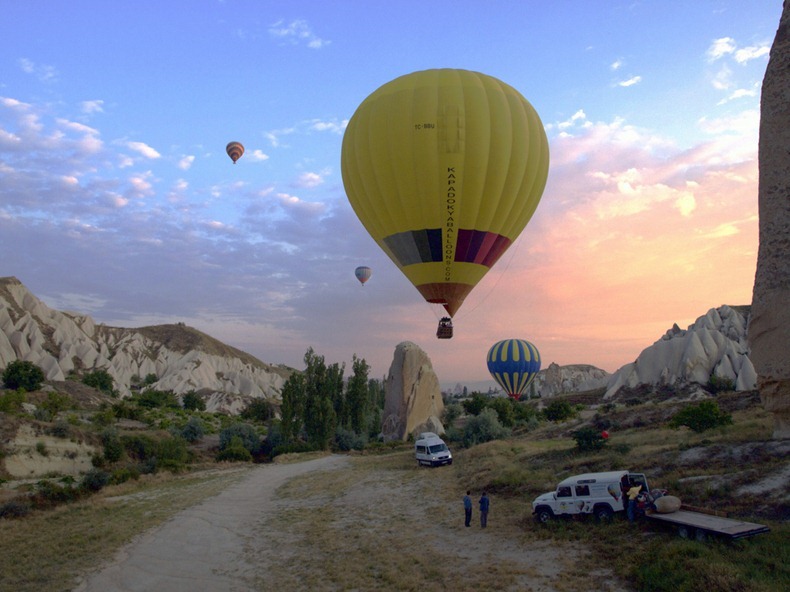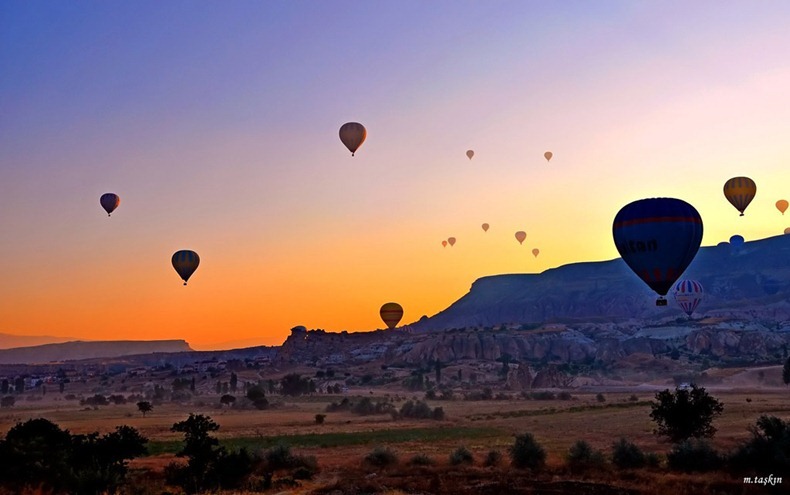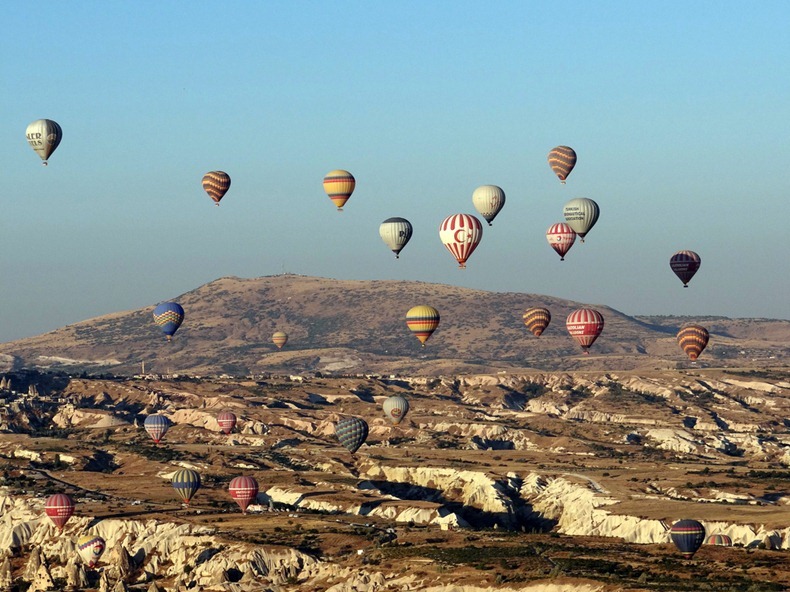Hot Air Ballooning Over Cappadocia’s Incredible Landscape
Cappadocia is an area in Central Anatolia in Turkey
with the most dramatic landscape in Europe.
Over thousands of years,
wind and rain eroded layers of sandstone and consolidated volcanic
ash to form the lunar-like landscape with fairy chimneys rock formations.
During the 4th to 13th century AD,
occupants of the area dug tunnels into the exposed rock face to build residences, stores,
and churches which are home to irreplaceable Byzantine art.
Because of the unique geological, historic, and cultural features,
Cappadocia is a popular tourist destination, and hot-air ballooning is a favorite sport.
The Cappadocia region
was formed as a result of volcanic eruption approximately 9 to 3 million years ago.
Over hundreds and thousands of years, the sedimentary rocks and deposits from volcanoes
were eroded into hundreds of spectacular pillars and minaret-like forms, that reach heights of 40 meters.
Within these rock formations people have excavated a network of caves
which served as refuges, residences, storage and places of worship dating from the 4th century.
The tunnel complexes formed entire towns with as many as eight different stories hidden underground,
making it one of the world's largest cave dwelling complexes.
Cappadocia was inhabited as early as the Hittite era, circa 1800 to 1200 B.C.
and later sat uncomfortably on the boundary between rival empires;
first the Greeks and Persians and later the Byzantine Greeks and a host of rivals.
This precarious political position meant that residents needed hiding places—and
found them by tunneling into the rock itself.
During the early days of Christianity, the caves of Cappadocia gave refugee to Christians
fleeing Rome’s persecution who arrived in some numbers and established monastic communities here.
The monks excavated extensive dwellings and monasteries and created Byzantine frescoed paintings
in cave chapels beginning in the seventh century, which endure in well-preserved isolation to this day.
Not all of Cappadocia’s troglodyte dwellings are museums.
Some still serve as homes and others as hotels,
which offer a truly unique hospitality experience.

















